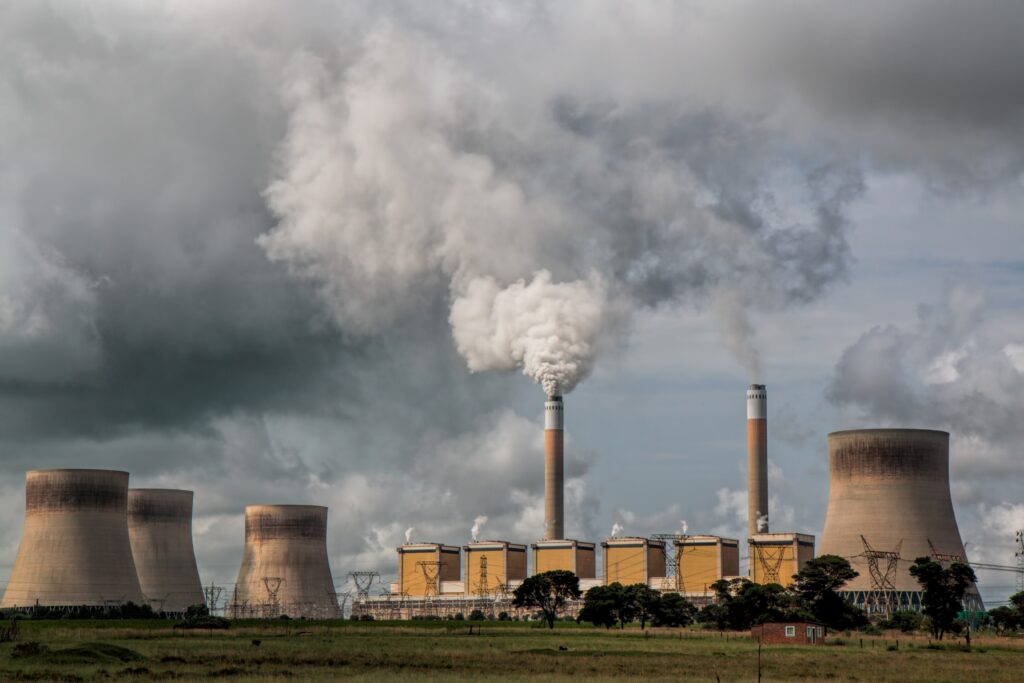What are the Biggest Causes of Greenhouse Gases?
Greenhouse gases are essential for maintaining a stable Earth temperature, but their overproduction causes the planet to warm and undergo other climatic changes. To solve environmental problems, we must first understand where these emissions are primarily coming from. This article will discuss the major contributors to greenhouse gas emissions and the effects these have on Earth.
Fossil Fuel Combustion:

Combustion of fossil fuels is fundamental to contemporary industrial civilization since it powers our houses, companies, and transportation networks. Unfortunately, the environment is suffering greatly as a result of this convenience. The combustion of fossil fuels including coal, oil, and natural gas results in the emission of carbon dioxide (CO2) into the air. More and more greenhouse gases are being released into the atmosphere as a result of this process, which is a major factor in the warming of the planet.
Electricity generation, transportation, and industrial manufacturing are just a few of the many sectors that rely on the combustion of fossil fuels. Large amounts of carbon dioxide gas are released into the atmosphere by power stations that generate electricity by burning coal or natural gas. Gasoline and diesel-powered vehicles also add to transportation-related pollution since they produce carbon dioxide gas as they burn. Furthermore, significant quantities of carbon dioxide are released into the air by companies that utilize fossil fuels for heating, processing, and powering machinery.
Beyond the short-term effects of emissions, the long-term effects of burning fossil fuels are substantial. Air pollution worsens the greenhouse effect, which in turn causes higher global temperatures, changed weather patterns, and other problems for ecosystems and people. Pollutants like sulfur dioxide (SO2), nitrogen oxides (NOx), and particulate matter are released into the air when fossil fuels are burned. These pollutants contribute to air pollution and respiratory ailments and pose major dangers to human health.
A combination of governmental measures, technical advances, and human efforts is necessary to tackle the problem of combustion of fossil fuels. Reducing our dependency on fossil fuels and mitigating greenhouse gas emissions can be achieved by transitioning towards renewable energy sources like solar, wind, and hydropower. Further steps can be taken to reduce the environmental impact of using fossil fuels, such as raising energy efficiency requirements, encouraging sustainable transportation options, and investing in carbon capture and storage technologies.
To prevent climate change and ensure the health of current and future generations, it is crucial to reduce emissions linked to burning fossil fuels. We can lessen the impact of using fossil fuels and make progress towards a more sustainable future if we switch to cleaner energy sources and cut down on our carbon footprint.
Deforestation and Land Use Changes:
In addition to housing many species, forests on Earth also serve an important role in controlling global temperatures. Nevertheless, these crucial ecosystems have been greatly damaged by widespread deforestation and changes in land use, which have resulted in substantial emissions of greenhouse gases and environmental deterioration.
The cutting down of trees for things like farms, factories, or cities is known as deforestation, because it causes the atmosphere to get a lot of carbon dioxide (CO2). As they undergo photosynthesis, trees take up carbon dioxide (CO2) and store it in their biomass, making them a kind of natural carbon sink. Clearcutting or deforestation releases carbon held in forests back into the atmosphere, where it adds to greenhouse gas accumulation and speeds up climate change.
Greenhouse gas emissions are caused by a variety of factors, including changes in land use, such as the clearing of forest land for agricultural use, pastureland, or urban development. A lot of the carbon that plants and soil have accumulated is released into the air when farms use methods like slash-and-burn or practice large-scale monoculture. Furthermore, variations in local and regional climate patterns are caused by changes in the Earth’s surface reflectance, which is altered when natural ecosystems are disrupted.
Beyond the obvious impact on greenhouse gas emissions, changes in land use and deforestation have far-reaching secondary effects. The extinction of species, the destruction of ecosystems, and the endangerment of local and indigenous peoples’ ability to make a living are all consequences of deforestation. Soil erosion, the elimination of watershed functions, and heightened susceptibility to floods and landslides are all consequences of deforestation.
It will take coordinated action on a global, national, and regional scale to address the causes of deforestation and changes in land use. Reforestation, afforestation, and agroforestry are all examples of sustainable land management strategies that can improve carbon sequestration and rehabilitate damaged ecosystems. Preserving forest ecosystems and reducing greenhouse gas emissions requires legislation to end illicit logging and land conversion, sustainable farming practices, and stronger land tenure rights.
Supporting forest conservation initiatives and compensating countries for reducing deforestation rates can also be achieved through international collaboration and financial incentives like REDD+. To achieve conservation objectives in the long run, it is crucial to include indigenous and local populations in decision-making and to ensure that they reap the benefits of sustainable land management methods.
Greenhouse gas emissions and environmental degradation are further exacerbated by land use changes and deforestation. For the sake of present and future generations, we can reduce the negative effects of deforestation, maintain biodiversity, and fight against climate change by making forest conservation, sustainable land management, and community engagement our top priorities.
Agriculture:

While agriculture is essential for providing food, fiber, and fuel for a growing global population, it also contributes significantly to greenhouse gas emissions. Various practices within the agricultural sector release greenhouse gases such as methane (CH4) and nitrous oxide (N2O), exacerbating climate change and environmental degradation.
Livestock farming is a major source of methane emissions, primarily due to enteric fermentation in ruminant animals like cattle, sheep, and goats. During digestion, microbes in the stomachs of these animals produce methane as a byproduct, which is released into the atmosphere through belching and flatulence. Additionally, the management of livestock manure, particularly in concentrated animal feeding operations (CAFOs), leads to the decomposition of organic matter and the release of methane and nitrous oxide.
Rice cultivation is another significant contributor to methane emissions in agriculture. Flooded rice paddies create anaerobic conditions that facilitate the production of methane by microbes during the decomposition of organic matter in the soil. While rice fields represent a relatively small land area globally, the sheer volume of methane emitted from flooded rice paddies makes it a notable source of greenhouse gas emissions.
Furthermore, the use of synthetic fertilizers in agriculture releases nitrous oxide into the atmosphere. Nitrous oxide is produced through microbial processes in the soil following the application of nitrogen-based fertilizers such as urea and ammonium nitrate. Additionally, agricultural practices such as tillage and crop residue burning can influence soil carbon dynamics and contribute to greenhouse gas emissions.
Addressing the emissions associated with agriculture requires a multifaceted approach that promotes sustainable farming practices, enhances productivity, and reduces environmental impact. Adopting climate-smart agricultural techniques, such as precision farming, crop rotation, and integrated pest management, can improve resource efficiency and mitigate greenhouse gas emissions. Additionally, practices like agroforestry, cover cropping, and conservation tillage can enhance soil health, sequester carbon, and reduce nitrous oxide emissions.
Furthermore, promoting sustainable livestock management practices, such as rotational grazing, feed supplementation, and manure management, can help reduce methane emissions from livestock production. Investing in research and innovation to develop low-emission livestock feeds and dietary supplements can also contribute to mitigating greenhouse gas emissions in the agricultural sector.
Moreover, empowering farmers with access to information, training, and financial incentives can facilitate the adoption of sustainable agricultural practices and support climate resilience. Policy interventions, such as subsidies for climate-friendly farming practices and incentives for carbon sequestration, can further accelerate the transition towards a more sustainable and resilient agricultural system.
In conclusion, while agriculture is a vital component of food security and economic development, it also poses significant environmental challenges, particularly in terms of greenhouse gas emissions. By promoting sustainable farming practices, investing in research and innovation, and supporting policies that incentivize climate-friendly agriculture, we can mitigate the impacts of agriculture on climate change and build a more sustainable food system for future generations.
Table of Contents
Industrial Processes:

Many different types of industrial processes add to global warming by releasing greenhouse gases into the air. Combustion and indirect chemical reactions are the main sources of carbon dioxide emissions in manufacturing processes, especially in heavy sectors such as cement, steel, and chemicals. Industrial emissions also include fluorinated gases, which are more powerful warming agents than CO2 and are produced in processes such as refrigeration, air conditioning, and semiconductor fabrication.
Waste Management:
Waste incineration and landfill disposal are examples of inadequate waste management methods that contribute to atmospheric greenhouse gas emissions. Landfill decomposition of organic waste releases the powerful greenhouse gas methane. Reducing greenhouse gas emissions from the waste sector requires better waste management practices, such recycling and composting, even though attempts to capture and use landfill gas for energy generation have reduced some emissions.
Conclusion:
It will take cross-sectoral collaboration and creative problem-solving to tackle the primary drivers of greenhouse gas emissions. Critical steps toward mitigating climate change and safeguarding the planet for future generations include transitioning to renewable energy, promoting sustainable land management practices, implementing climate-smart agricultural techniques, improving industrial efficiency, and improving waste management systems. We can work towards a future that is more sustainable and resilient if we identify and tackle these major sources of greenhouse gasses.

